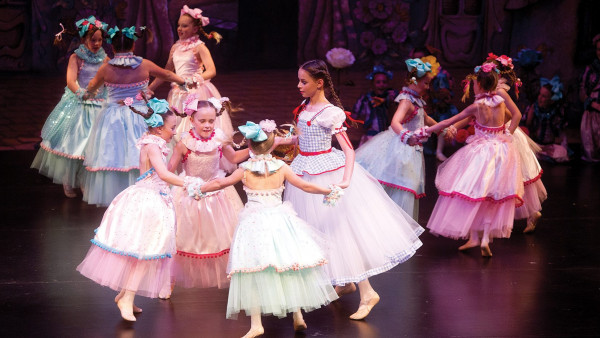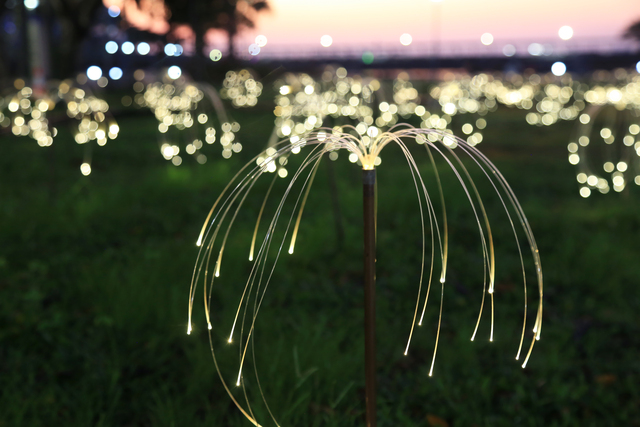Mildura’s Joanne Allen is no stranger to the world of dance. Joanne has been actively involved in the Mildura Ballet and Dance Guild for more than 27 years and was awarded a life membership in 2017. But what makes Joanne invaluable to the Guild is her sheer talent and love for designing ballet costumes. Lauren Adcock chats with Joanne about what it takes to bring unique costumes to life.
Where it all began
“My journey began in 1992 when my daughter Siobhan commenced her first ballet class,” she says.
“The end-of-year performance came around with the classical teacher asking the parents if anyone sewed.
“I put my hand up and had a discussion with the teacher as to what the requirements were.”
As the years went by, Joanne was approached by teachers to organise costumes for the dancers and when it came time for Siobhan to leave the guild for university, she kept sewing.
“I stayed on in the role of costume co-ordinator and committee member and during this time I taught myself to make a tutu with the aid of a book which belonged to Mrs Duff (classical ballet teacher Janine Kerr’s mother),” she says.
The making process
Joanne says making costumes can be as complex as a tutu or simple as a leotard.
“A classical tutu, belle or romantic tutu can take up to 24 hours sewing time to make before it is decorated,” she says.
“The decoration process can be as long, as generally it requires to be hand sewn.
“Other classical, jazz and tap character costumes can take between 10-12 hours to make dependent upon their complexity.”
Over the years, Joanne has held costume-making workshops for parents to give them the opportunity to learn how to make various items.
“As the Guild has grown in numbers over the years and the students often undertake more than one dance genre, our teachers tend to look online for costume suppliers as often they can be purchased for less than buying fabric,” she says.
“The Guild has a budget for each costume which covers a costume purchase, fabric and trims.
“The parent either makes the costume themselves or organises their own dressmaker to make it.”
Finding inspiration
“Our teachers come up with the inspiration for each costume dependent upon the ballet, story line or dance they are choreographing,” she says.
“Dependent upon the teacher sometimes there is a sketch or a conversation on the requirements they need for the costume.
“My understanding what their vision is has developed over the years that the teacher and I have a good understanding of what is required.”
Joanne says that on occasions she has been able to create and design the costumes.
“I have on occasions been able create and design the costumes, showing the teacher the finished pro-forma, sometimes some minor adjustments is required for movement,” she says.
“Generally you need to think outside the box when making costumes, taking into account the movement required in the item.
“Sometimes traditional dressmaking techniques cannot be utilised as they do not allow for movement.”
All things Eisteddfod
With the Eisteddfod behind us for another year, Joanne says costuming is a process that begins in February.
“The process begins in February each year when the teacher discusses with students and parents on requirements for solos/duos/trios,” she says.
“Parents have the opportunity to hire a costume, make or purchase a new one. The expense for eisteddfod costume is with the parent.”
The Guild also endeavours to recycle past costumes according to Joanne who says it alleviates additional expenses for families.
“Whether a parent purchases a tutu online or has it made privately, it generally still needs to decorated.
“Some parents undertake this task themselves or organise someone to do it for them,” she says.
“Generally the costumes are required to be ready several weeks before the eisteddfod to practice in, to ensure everything works with the dance as it should.”
Talking favourites
When it comes to talking about all time favourite costumes, Joanne says her joy will always be classical styles.
“My love is classical, starting from when I was a little girl who wanted to learn ballet,” she says.
“When my daughter began dancing it gave me the opportunity to use my creativity in her ballet costumes.
“Over her dancing years I made her over a dozen tutus from pancake to romantic in addition to costumes for contemporary, jazz and tap.”
Joanne says purchasing costumes online was not an option then like it is today.
“I cannot count how many tutus I have made over the years, but it is rewarding to see the smile on the dancer’s face at seeing her completed tutu,” she says.








